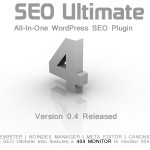Are your search engine rankings depending too much on one page (like your homepage) or one sub folder of your website? If so, here are a few tips to spread the link flow around to hedge your SEO efforts. Chances are, unless you are employing a tiered SEO strategy that you are overly dependent on your websites home page or similar pages in your website.
Link flow pools into different pages of a website and learning how to harness this ebb and flow is crucial for long term and short term ranking objectives. The most common cause of this is excessive linking to a page without using a “nofollow” tag within the structure of the link.
For example, each time you link to a page you are creating a type of reference /citation that is essentially voting to escalate the keywords in the anchor text (the text in the link) for the page that it links to.
Each link indexed in a search engine is impacting your link profile either intentionally or inadvertently. The premise of links as a metric for relevance is nothing new; in fact it predates search engines and is one reason why they built many of their algorithmic calculations around the value of citation.
By understanding this metric, the bottom line is, any link that you can control (either internal or external links to your website) is a strategic advantage when coupled with optimal site architecture and topical content.
If you inadvertently link to your contact page for example and do not link from any other area in the body text of your documents the page with the highest percentage of anchor text will start to take on the ranking factors from the linked page to the destination page.
The pages with the strongest desired rankings should have a high percentage of internal links for those keywords from relevant pages within the site. If there are not enough supporting pages, then that should be the first priority to cross the tipping point for the keyword in question. Although this is an aspect of internal linking, you should combine this strategy with a high percentage of deep links (links to specific pages rather than just linking to the homepage) to spread the ranking factors to the most suitable page.
The real premise behind SEO is to (a) cultivate the ideal page to link from and (b) increase topical relevance for the page being linked to so that they create a dynamic synergy.
In an ideal scenario, the website providing the link for off page factors should have (1) the use of a relevant title featuring the keyword or a synonym of the keyword to match the keyword /anchor text in the link (2) relevant meta tags that incorporate the phrase, so search engines determine the page providing the link is relevant to the search term and the target page.
One of the most fundamental tactics for search engine optimization is to anchor multiple landing pages or categories in a website to funnel a specific type of consumer to each page.
For example, pricing queries go to the pricing page, product queries go to a specific product page based on make, model, etc. (not a general catch all page). By creating each type of page with a specific ranking objective and then holistically funneling the ranking factors from secondary pages, sitemaps and other websites, you can essentially provide an optimized profile for the given website.
Based on the content, internal linking, age and chronology of the topical content and inbound links from other websites contribute to how much authority each page or segment gains.
Here are a few tactics you can use to accomplish this feat:
- Control the amount of links leaving or linking to a page from within your website
- Implement static pages as hub pages to tie together important themed pages of your website
- Use sitemaps to blend ranking factors
- The proper use of deep links
Aside from the methods suggested above, the final ingredient for any SEO campaign is time (giving the results time to rise to the top by building authority). Even though you can implement 80% of the techniques, each website has its own rate of assimilation though osmosis and mitosis before it goes through the chrysalis state and emerges as a true SEO champion.
The real value is (a) understanding the dynamic and being able to reproduce the effect and (b) knowing that it is better to start with a range of objectives to use as a blueprint vs. working after the fact to produce tangible results.











Great reading, thanks for the info.